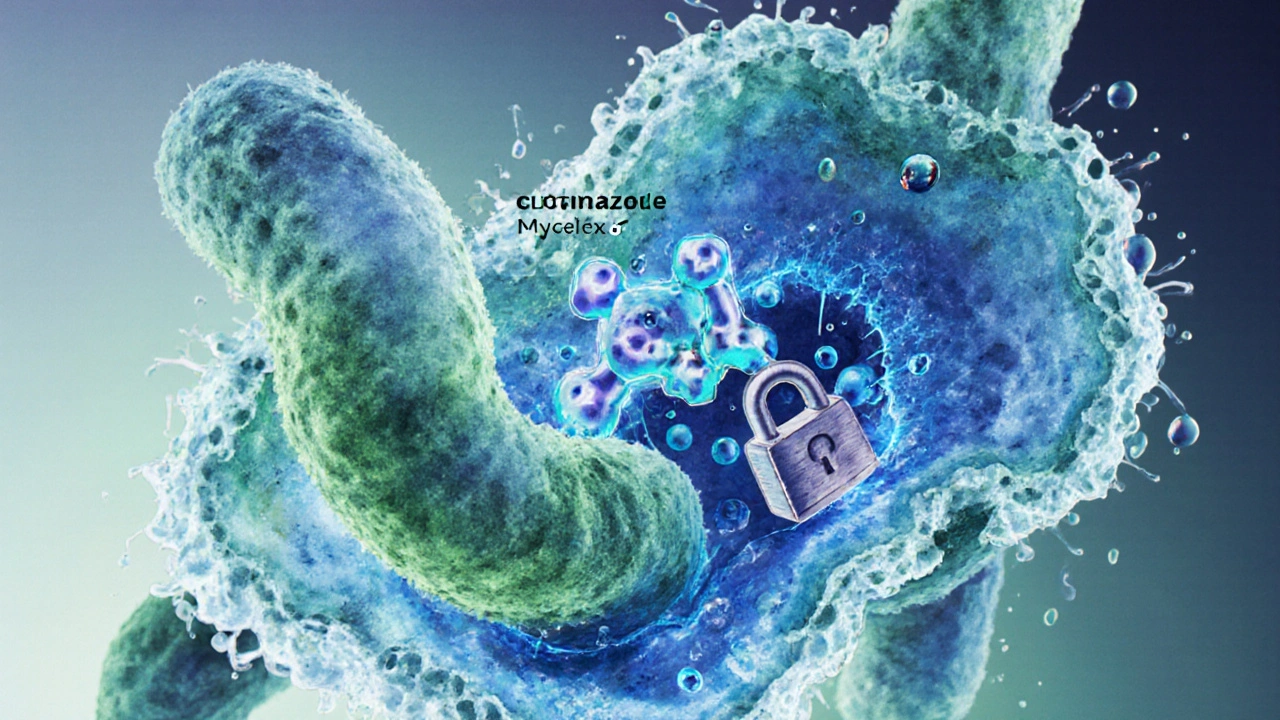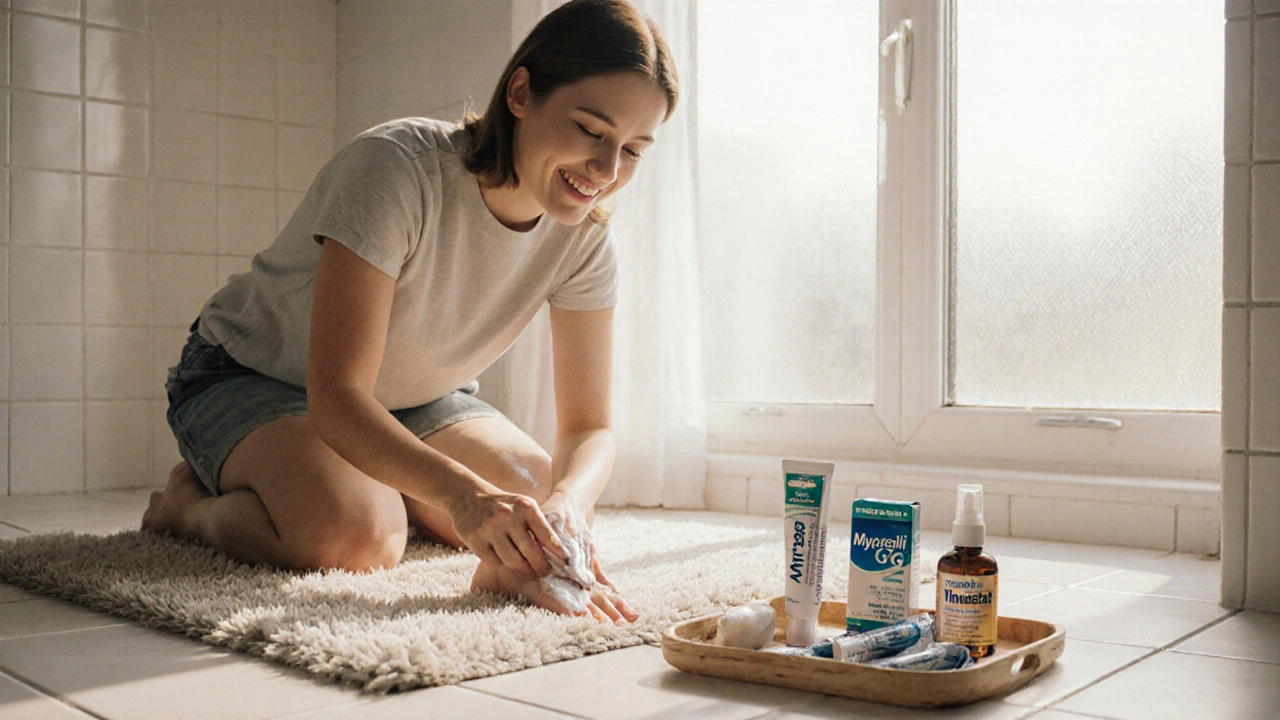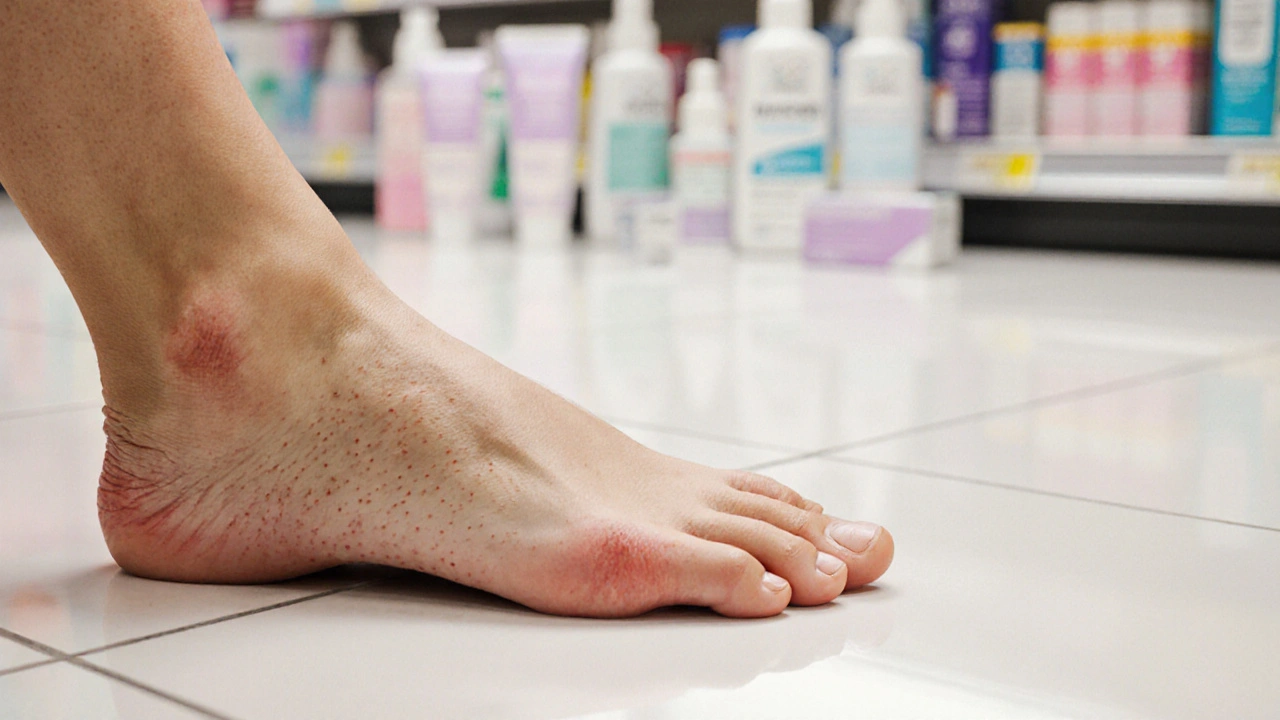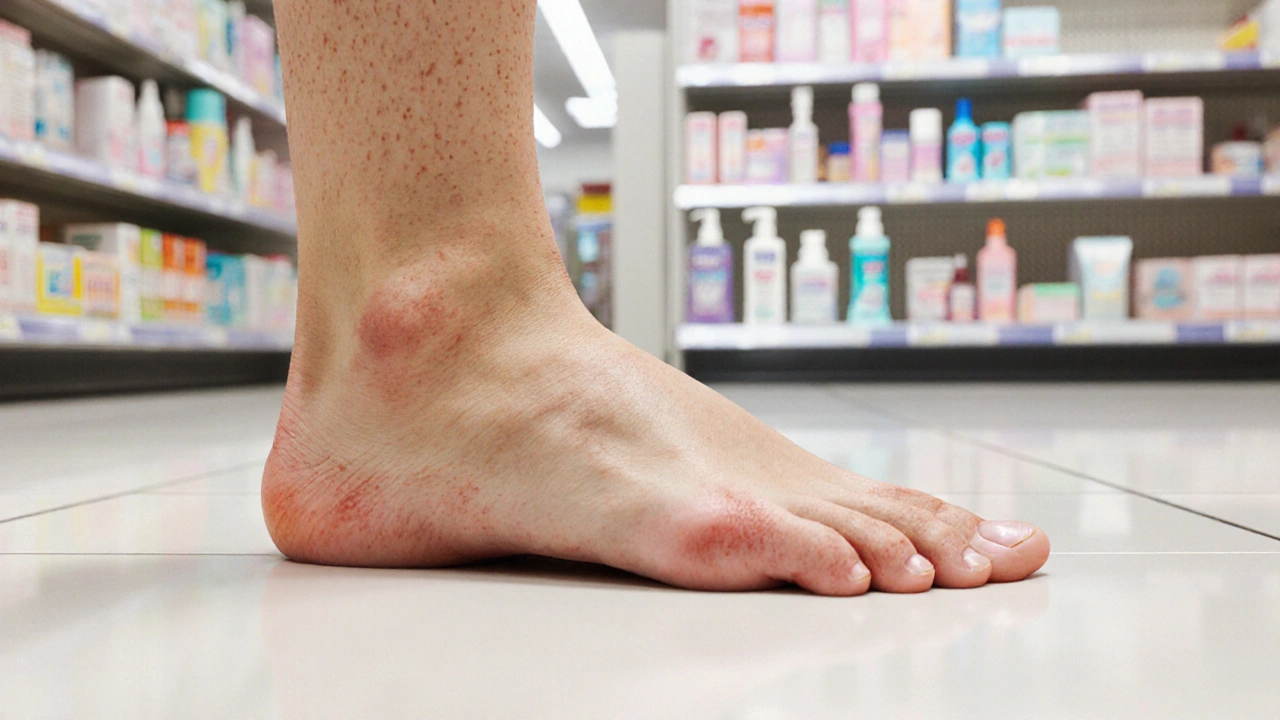Antifungal Treatment Selector
Recommended Treatment:
When a stubborn athlete’s foot or a nagging ringworm won’t quit, most people head straight for the nearest pharmacy. But with a shelf full of creams, sprays, and pills, choosing the right product feels like gambling. This guide cuts through the hype and shows you exactly how Mycelex G a topical cream whose active ingredient is Clotrimazole measures up against the most common alternatives. By the end you’ll know which formula fits your skin type, infection severity, and lifestyle best.
Key Takeaways
- Mycelex G uses Clotrimazole, a broad‑spectrum azole that stops fungal growth by blocking ergosterol synthesis.
- Terbinafine (Lamisil) works faster on dermatophytes but can cost more and may cause liver concerns when taken orally.
- Miconazole (Monistat) offers a similar azole profile to clotrimazole but often comes in higher‑dose formulations for yeast infections.
- Tolnaftate (Tinactin) is the only non‑azole on the list; it’s great for quick relief but less effective on stubborn Candida.
- Pick Mycelex G when you need a gentle, over‑the‑counter option for mild‑to‑moderate skin infections and you prefer a cream that stays on the surface.
How Mycelex G Works
Clotrimazole belongs to the azole family. It binds to the fungal enzyme lanosterol14α‑demethylase, halting the production of ergosterol - a key component of fungal cell membranes. Without ergosterol, the membrane becomes leaky, the cell can’t grow, and it dies. The cream delivers a 1% concentration of the drug directly to the skin, meaning the fungus is attacked where it lives.
Because the medication sits on the surface, systemic absorption is minimal. That translates to a low risk of liver or kidney side effects, a plus for people taking other meds. In clinical trials, a twice‑daily regimen for two weeks cleared >90% of athlete's foot cases and >85% of ringworm infections.

What to Look for in an Antifungal
Before you scan the shelf, ask yourself these questions:
- Infection type: Dermatophytes (like athlete’s foot, ringworm) respond well to azoles and allylamines. Candida (yeast) sometimes needs a higher‑dose azole or a different class.
- Severity and duration: A brief, mild outbreak can be handled with a 2‑week cream course. Deep or recurrent infections may need oral therapy.
- Formulation preferences: Creams are moisturizing, sprays dry quickly, powders keep feet dry. Choose what feels comfortable.
- Cost and availability: Some brands are pricier because of brand name marketing or patented formulations.
- Safety profile: Look for products with low systemic absorption if you’re pregnant, have liver issues, or are on multiple prescriptions.
Side‑by‑Side Comparison
| Feature | Mycelex G (Clotrimazole) | Lamisil (Terbinafine) | Monistat (Miconazole) | Tinactin (Tolnaftate) |
|---|---|---|---|---|
| Active class | Azole | Allylamine | Azole | Thiocarbamate |
| Typical concentration | 1% cream | 250mg oral tablet or 1% cream | 2% cream or 500mg vaginal tablet | 1% cream/spray |
| Primary target fungi | Dermatophytes & Candida | Dermatophytes (strong) | Candida & Dermatophytes | Dermatophytes (moderate) |
| Time to symptom relief | 3‑5days | 2‑4days | 4‑6days | 5‑7days |
| Systemic absorption (oral use) | Negligible (topical only) | Up to 15% (oral) | Negligible (topical) | Negligible (topical) |
| Common side effects | Local irritation, itching | GI upset, liver enzyme rise (oral) | Burning, dryness | Mild redness |
| Price (US$ per 30g) | ~$6 | ~$12 (cream) / $25 (tablet) | ~$8 | ~$9 |
| Best for | General use, beginners, sensitive skin | Fast‑acting foot infections, athlete’s foot | Yeast infections, vaginal candidiasis | Quick relief, powder‑friendly environments |
Deep Dive into Each Alternative
Lamisil (Terbinafine)
Terbinafine is an allylamine that attacks fungal cells by inhibiting squalene epoxidase, a step earlier than clotrimazole’s target. The result is a buildup of toxic squalene that kills the fungus faster. Oral Lamisil tablets are a go‑to for stubborn toenail fungus because they reach the nail matrix. For skin infections, the 1% cream works well, but the price is higher and the cream can feel greasy.
Because up to 15% of an oral dose ends up in the bloodstream, doctors usually order liver‑function tests before prescribing a 2‑week course. If you have a healthy liver and need a speedy cure for athlete’s foot, Lamisil is a strong contender.
Monistat (Miconazole)
Miconazole also belongs to the azole family, sharing the same mechanism as clotrimazole. The key difference is dosage: Monistat often comes in 2% creams or 500mg vaginal tablets, delivering a higher local concentration. This makes it particularly effective against Candida, the yeast responsible for most vaginal and skin yeast infections.
One drawback is that the higher concentration can cause a burning sensation on sensitive skin. Still, for recurring yeast infections, many users prefer Monistat’s potency over Mycelex G.
Tinactin (Tolnaftate)
Tolnaftate is a thiocarbamate that blocks the synthesis of fungal cell wall components. It’s the odd one out because it’s not an azole. The advantage is a low cost and a formulation that dries quickly, useful for athletes who need a non‑sticky spray.
However, its spectrum is narrower. It works well on athlete's foot but struggles with Candida‑driven rashes. If you’re battling a mixed infection, Tolnaftate alone may not cut it.

When to Choose Mycelex G Over the Rest
If any of these sound like you, Mycelex G is likely the right pick:
- You have mild‑to‑moderate ringworm or athlete's foot and want a gentle, non‑prescription solution.
- Your skin is sensitive, or you’ve reacted to stronger creams in the past.
- You prefer a cream that stays moist, helping cracked skin heal faster.
- You’re pregnant or nursing and want to avoid systemic absorption.
- You’re looking for the cheapest effective over‑the‑counter option.
On the flip side, consider alternatives if you face any of these situations:
- Rapid relief is a priority and you’re okay with a higher price - go for Lamisil.
- Yeast infection dominates (e.g., recurring vaginal candidiasis) - Monistat’s higher dose may win.
- You need a spray or powder for sweaty feet - Tinactin’s dry finish is ideal.
Safety, Interactions, and Common Side Effects
All four products are generally safe when used as directed. Local irritation-redness, itching, mild burning-is the most frequent complaint. If irritation persists beyond a week, stop using the product and consult a pharmacist.
Oral terbinafine (Lamisil tablets) carries a small risk of liver toxicity, especially in patients with pre‑existing liver disease or those taking other hepatotoxic drugs. Always disclose your full medication list to a healthcare provider.
Pregnant or breastfeeding women should stick with topical azoles like Mycelex G or Monistat; oral terbinafine is typically avoided unless the benefits clearly outweigh risks.

Frequently Asked Questions
Frequently Asked Questions
Can I use Mycelex G on my feet and groin at the same time?
Yes. The cream is safe for most body areas. Just wash the skin, apply a thin layer twice daily, and keep the area dry between applications.
How long does it take for Mycelex G to clear a fungal infection?
Most users see reduced itching and redness within 3‑5days. Complete clearance usually requires a 2‑week course, even if symptoms disappear sooner.
Is it okay to use Mycelex G while taking other topical meds?
Generally, yes, as long as the other product isn’t a strong steroid or another antifungal that could cause over‑exposure. Apply one product, let it absorb, then apply the second.
What should I do if my infection doesn’t improve after two weeks?
Stop the cream, clean the area, and see a healthcare professional. You may need a prescription oral antifungal or a different topical class.
Are there any age restrictions for Mycelex G?
The product is labeled for ages 2years and older. For infants or very young children, ask a pediatrician before use.
Next Steps & Troubleshooting
1. Identify the infection. Look at the location, color, and itching level. If you’re unsure, a quick visit to a pharmacist can confirm whether it’s a dermatophyte or a yeast.
2. Pick the right product. Use the table above as a checklist: match the infection type to the active ingredient, consider price, and think about formulation preferences.
3. Apply correctly. Clean and dry the area, apply a thin layer, and wash your hands after each use. For feet, keep shoes breathable and change socks daily.
4. Monitor progress. If symptoms improve within a week, continue the full course. If no change after 7‑10days, switch to an alternative or seek medical advice.
5. Prevent recurrence. Keep skin dry, avoid sharing towels, and consider an antifungal powder for daily maintenance if you’re prone to athlete’s foot.
By following these steps, you’ll turn a frustrating skin infection into a quick, painless resolve-whether you stick with Mycelex G or opt for a different champion.
